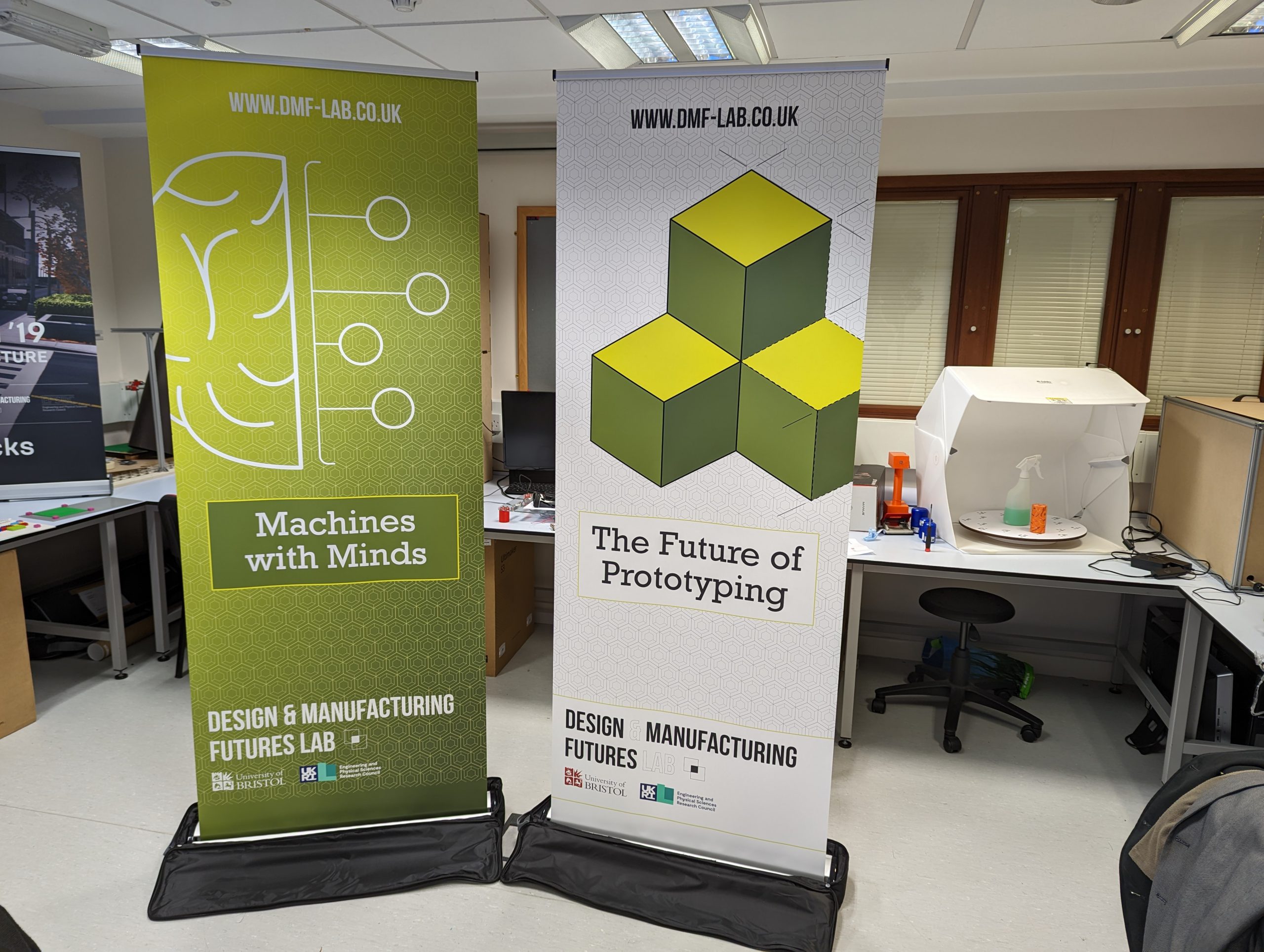FormNext is just around the corner and we’re looking forward to showcasing our work at our stand. We’re keen to connect up with industry, get feedback on our innovations and look to the future and explore how we can pull our research through to industrial application.
There will be a range of posters and slides showcasing the research the group are currently undertaking as well asa series of demos under our headline themes:
- Machines with Minds
- The Future of Prototyping
Machines with Minds
Machines with Minds encompassing the research we’re doing that is enabling our machines to ‘think’ for themselves. Funded by the EPSRC through the Brokering Additive Manufacturing project, we’re exploring how to make Additive Manufacturing jobs and machines have cognition – seld-aware, reason and communicate. By giving them them these abilities, machines and jobs can form networks and negotiate who is going to manufacture what. Our research, both experimental and numerical, has shown that these agent-based networks are:
- Responsive – Individuals machines can update their own logics, goals, and objectives in real-time and based on current, historical, and forecasted demand.
- Resilient – A machine failing does not inhibit the process of other machines.
- Secure – Through the creation of a set of information sharing protocols that obscures the description of the job to a degree until it is accepted. On acceptance, design data is encrypted and transferred, never resting in the cloud.
- Reliable – Ephemeral services that can be re-initialised and duplicated in an instance to meet increase/decrease in demand and provide the redundancy specified by the community.
- Computationally Sustainable – Minimal central server requirements to broker connections and studies conducted to best utilise the existing edge computing capacity available (i.e., machine CPU) to operate.
- Scalable – Machines can be added to the network with little additional overhead.
- Inclusive – The underlying technology enabled everyone from hobbyist, education, workshops through to large AM farms to contribute to the network as the control and governance of the machine is maintained with the owner.
- Fair – All who joined were able to find work for their machines to do.
- Flexible – Machines can join and leave the networks as they please.
Further, we have demonstrated that they are Realisable using today’s industry-standard and robust technologies. This is through the development of a Living Lab and open-source codebase that can be deployed to create agent-based AM networks. You will be able to see the technology operate in public for the first time at FormNext!
Please come along to our stand an submit a job!
Our research has explored the business models in AM and what needs to be done to enable industry to adopt new approaches such as agent-based manufacturing. Dr Jennifer Johns will be giving a talk during the event (16th November, 14:00-14:40, see here). The talk is on:
As the global economy adapts to several ‘shocks’, this presentation discusses the potential for Additive Manufacturing to drive systemic changes in where and how goods are manufactured. We will review the waysin which international supply chains are changing and critically evaluate the ways in which AM can contribute,or even drive, change. Different forms of supply chain configurations are emerging – such as decentralised or distributed. This presentation will focus on distributed manufacturing and review the opportunities and challenges facing AM as an enabling technology. It will end with details of current research being conducted bythe University of Bristol on agent-based distributed networks.
The Future of Prototyping
The Future of Prototyping encompasses the research we’re doing to re-imagine how we prototype today and in the future. Funded by the EPSRC through ProtoTwinning and 21st Century Prototypes, we’re examining:
- How we capture the knowledge and information generated from digital-physical prototyping (A non-trivial task when prototypes can take all manner of shapes and form!)
- The role of extended reality in making mixed reality prototypes and how we can play with fidelity (e.g., low-fidelity physical model coupled with a high-fidelity virtual model)
- AM prototypyes with realistic mass properties
- And guidance and processes to support designers in knowing what to prototype, how to prototype and when to prototype within the design process.
At the stand, we will have an Extended Reality demo that will play with your senses (can you tell the difference between two prototypes?) and Pro2Booth, our platform for capturing prototype knowledge.
Please come along to find out what the future will hold.
And there’s more!
We will also have information sheets on:
- Web Serial Printing – Did you know that you can control USB devices from the browser?
- 21st Century Prototyping Technology – Powering up prototypes to learn more, faster, with less.
- Technology-Enabled Circularity: Digitalisation and Sustainability.
- Brokering Additive Manufacturing (BAM) – Did you know that there are around 230,000 Additive Manufacturing machines across the UK?
- Brokering Additive Manufacturing (BAM) – Business Models for AM
- Docker Multi-Objective Optimisation (DoMOO) – Want to perform Design Optimisation across all your simulation models?
- Pro2Booth – Don’t lose your Prototyping Knowledge!
- Mass Property Emulation (Variable Infill) – Looks like but does it feel like?
- Haptics of Mixed Reality Prototypes – Is Seeing Believing?
- Quantum Computation for Systems Design – The future of solution space exploration?
The team will be happy to discuss any and all of our research, and we’re keen to connect and build relastionships that support future research and innovation bids, and see our research be pulled through to industry.
Looking forward to seeing you at FormNext!

